So I dropped my letterpress-printed telephone message pad pages off at Kwik Kopy this morning and when I dropped back just before 4:00 p.m. they’d been “padified” (there must be a technical printing term for this, no?). I’m very happy with the result.
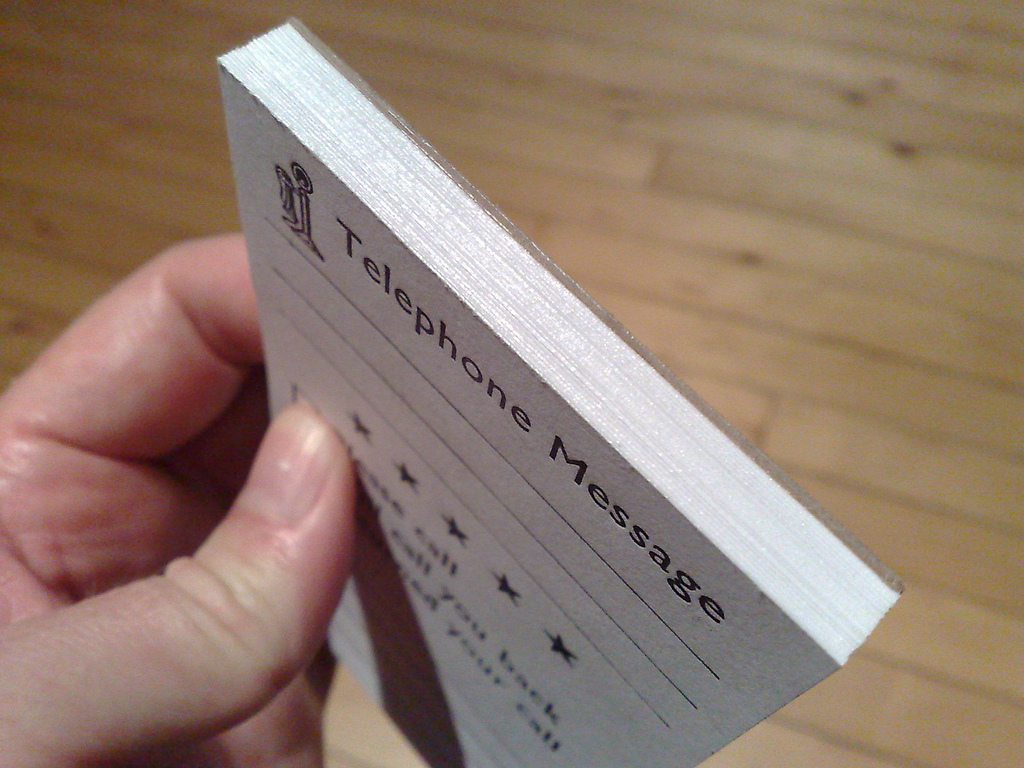
It’s not every day that Robert Fulford, a Canadian icon and the country’s preeminent man of letters, writes glowingly about a project you’re deeply wedded to. So today’s column on The Old Farmer’s Almanac – Farmer’s Almanac more ‘weed-dating’ than game-changing – has put an extra spring in my step. Here’s an excerpt:
The secret of the Almanac writers is poise. They know their worth and take a quiet pride in their heritage. They believe in their knowledge and believe in spreading it, just like Robert Thomas. The anonymous author of the 2011 Farmer’s Calendar describes his habits and outlook with a sense of authority no one would think of defying.
He discusses his treatment of the lawn on his property with the pride of someone who expects a medal for his accomplishment. The world is full of disorderly lawns, a frequent cause of neighbourhood scandal, but the Almanac guy brags about his. He’s proud of owning a messy, weed-strewn lawn. It’s environmentally sound, for one thing: It needs little water and no fertilizer or chemicals. Weeds attract bees, butterflies and other pollinating insects, good for plants in the neighbourhood. And, making this a perfect item in the Almanac, you can use the dandelion greens in a salad.
I interviewed Fulford back in the late 1980s for Trent Radio when he was on a swing through Peterborough; he was incredibly kind and patient, taking the time to respond with wit and intelligence to what must have been the annoyingly mundane questions of a 20 year old.
The architects of Prince Edward Island, vital to the public interest but not known for their public relations abilities, are holding an “Architecture Week” starting Monday, October 3, 2011. True to their labyrinthian style, web publicity for the event is locked up inside a PDF inside Google Docs, the digital equivalent of printing something on parchment and hiding it under a bushel.
To help mitigate the damage caused by this obscure form of proto-publicity, here’s what they’re up to:
- Tuesday, October 4, 7:30 p.m. – “What is Sustainability? A Built Environment Perspective,” a lecture by Professor Steven Mannell, Director of Dalhousie University’s College of Sustainability. Confederation Centre Art Gallery.
- Wednesday, October 5, 2:00 p.m. to 6:00 p.m. – Public open houses at architectural firms (map of Charlottetown firms):
- BGHJ, 233 Queen Street, Charlottetown.
- North 46, 77 Grafton Street, Charlottetown.
- Chandler Architecture, 92 Queen Street, Charlottetown.
- Open Practice, 63 Pownal Street, Charlottetown.
- Coles Associates, 6 Prince Street, Charlottetown.
- Architecture 360, 45 Harrington Lane, Rice Point.
- Thursday, October 6, 1:00 p.m. to 3:00 p.m. – Architectural Technology Program Open House, Room 114 at Holland College Centre for Applied Science and Engineering Technology.
- Thursday, October 6, 9:10 p.m. – Movie Night with My Architect at City Cinema. Regular admission.
I’ve created a public Google Calendar of all the events (iCal, HTML) so you can sync everything into your device of choice and be sure not to miss anything.
Presumably there will also be all sorts of underground after-hours architecture parties, but you’ll need to know someone who knows someone to get into those.
After I blogged about If This Then That a week ago, Oliver read the post, signed up for an account, and created his first “recipe,” which was to tweet out the time every morning at 2:30 a.m.
I know this because I saw his first auto-tweet the next morning and couldn’t for the life of me figure out how it had got there.
It’s a testament to the simplicity of ifttt.com, and to Oliver’s ingenuity, that he figured this all out on his own; last night we sat down together and worked out a few more recipes, like “if tomorrow’s forecast calls for rain, then send me an email” and “if I call this number, send me an email what the message I leave.”
On the way to school this morning we reflected on how so much of what we experience in the modern world is based on the same sort of “if this, then that” decision making… “if the light has just turned green and 10 seconds have passed, start counting down the pedestrian signal timer,” “if it’s 8:20 a.m. on a weekday, ring the school bell,” “if it’s the day after the day you had music, then you have gym,” and so on.
Indeed ultimately what I do for a living is string together interwoven series of “if… then” statements to make virtual things happen – computer programming is little more than layers upon layers of abstraction on top of this simple core.
So while ifttt.com is intended, I think, as a digital lifestyle plumbing tool, I think it also holds great potential as a tool that educates in the basics of digital logic: by making the triggers and actions real-world stuff that people actually care about (time, weather, Facebook updates, YouTube videos) rather than fictional abstractions (moving a turtle around a screen, converting temperature units and all the other “introduction to computer programming” tropes) programming logic immediately jumps to life as something with utility.
While it’s a stretch to say that “if it’s 2:30 a.m. then send a tweet” is Oliver’s first computer program, it’s not a big stretch; he’s got a visceral understanding of the atomic unit of digital logic now, and everything else is gravy.
After some adjustments to the type and the lines, here’s what I ended up with after tweaking version 0.1. I moved the heading to the right and adjusted the line thicknesses (still not perfect, but it will take me a while to figure out how to read line thicknesses; the body of the line rule is all the same thickness, lines that are thinner are shaved off with a bevel along the edge).
I printed off about 40 copies, cut out a 3” x 5” cardboard back, and just returned from dropping off the result at Kwik Kopy for “padifying.” They tell me the rubber binding takes a while to dry, so I’m to return at day’s end to see the result.
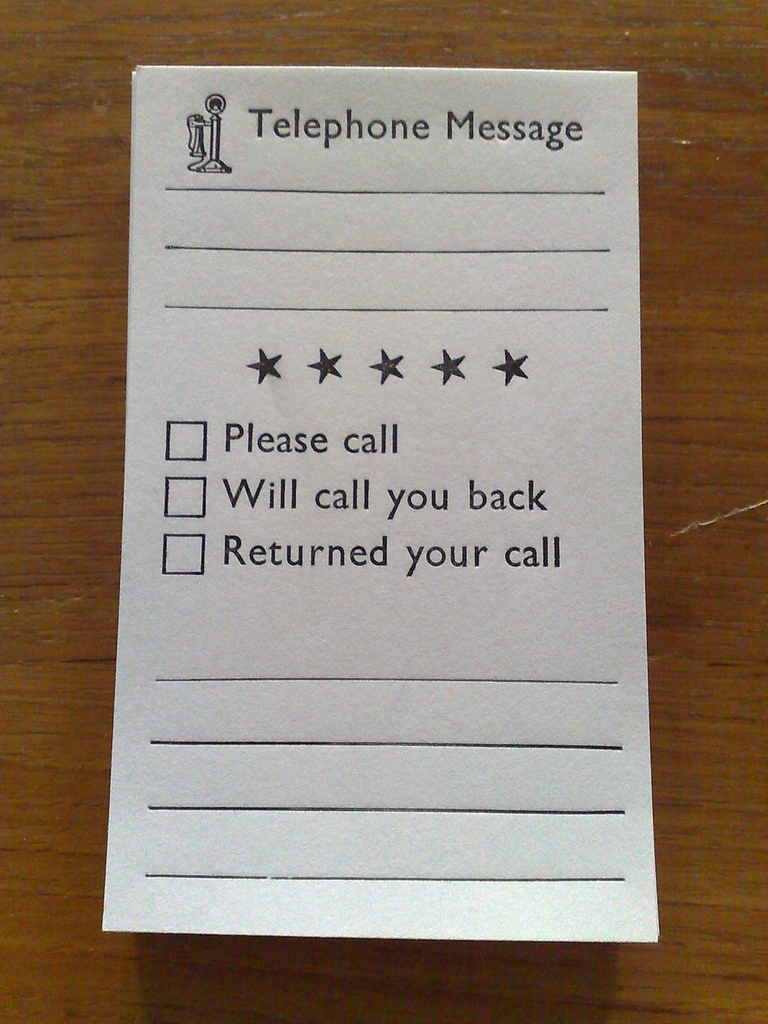
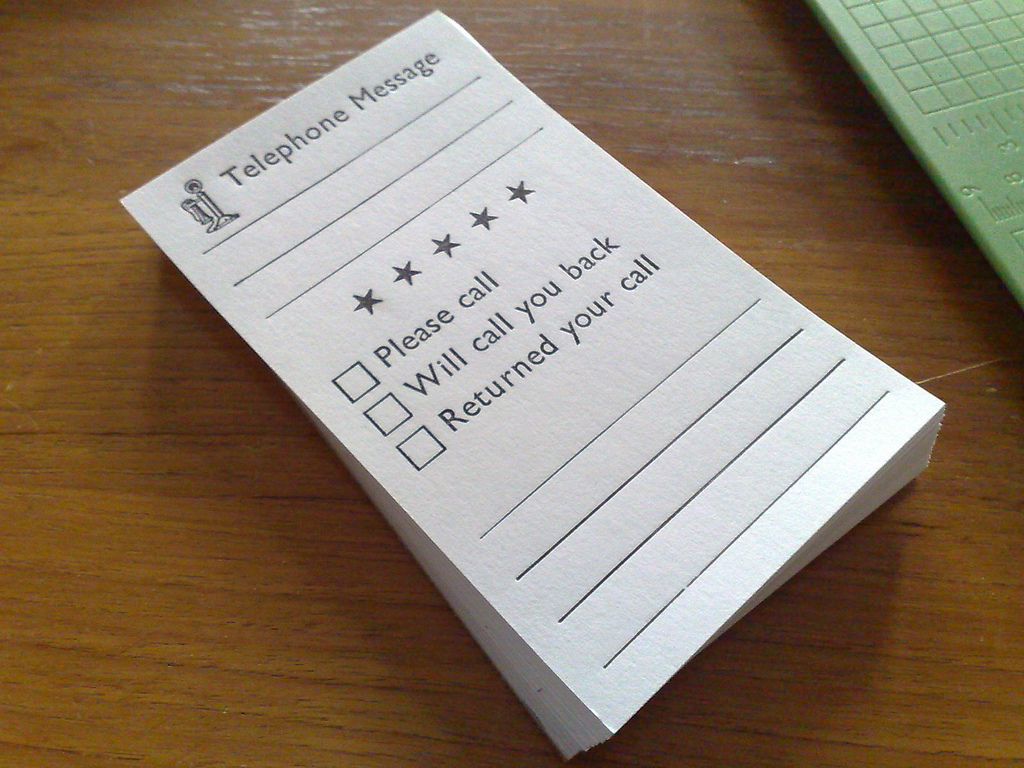
Ever since I acquired a letterpress cut of an old candlestick telephone at the Printing Arts Fair I’ve had the notion of creating a telephone message pad bouncing around my head. When I heard from Kwik Kopy, the print shop up the street, that they could take my loose cards and bind them together with that magic rubbery “pad of paper” process, I was sold.
I’m using my line rule and stars (I like the idea of applying an “importance rating” to phone messages), also acquired at the Printing Arts Fair, along with my 18 pt. Gill Sans from M&H Type. Here’s the first print to come off the press, obviously in need of some modifications (mouseover to see my notes on what I plan to change).
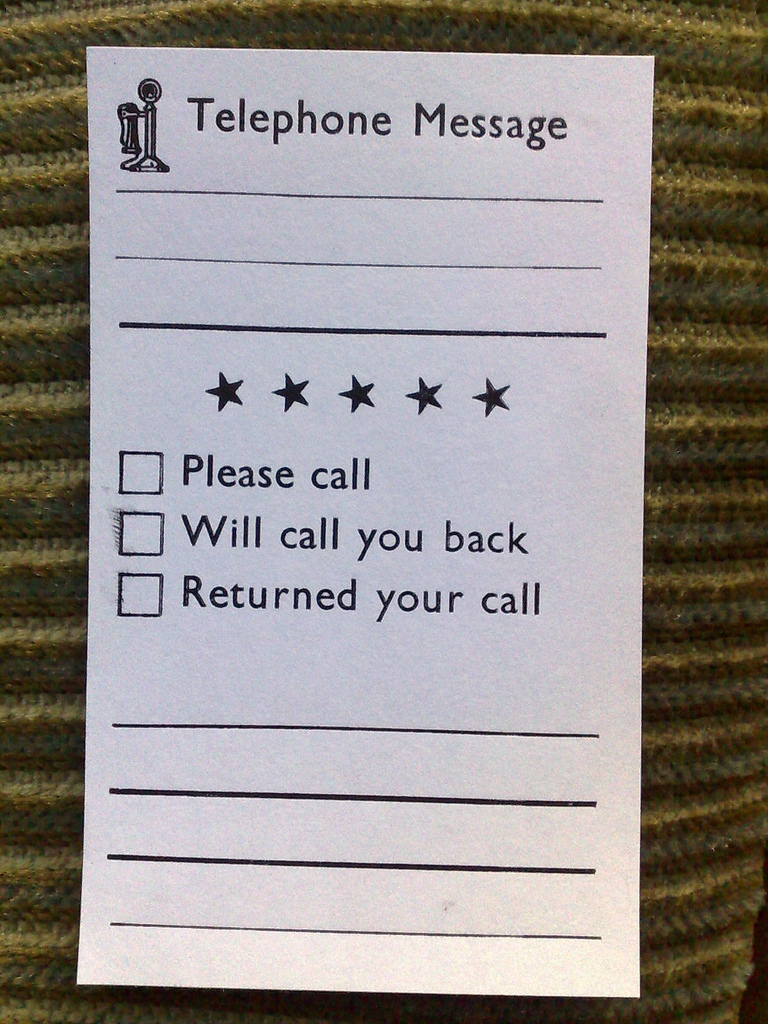
Jane has only lived in downtown Charlottetown for two days, and already she’s named a ladybug after me. Alas my arthropodic namesake flew away.

Sometimes it’s useful to exist on the Internet as though you were in a different country. The reasons for this can vary: maybe you’re want to use a website that’s only available in your home country; or, like happened to me today, maybe you need to see how your clients in another country experience geo-targetted ads served onto their website.
There are many ways to achieve this, many of which either don’t work, involve some expense, or are complicated.
Here’s a simple solution. Or at least a simple solution if you already have SSH access to a host in the country you want to appear to be coming from.
First, from the command line on your local computer:
ssh -Nf -D 8080 username@example.com
Replace username@example.com with your username and host name of the remote host you’re going to use, the one that’s in Moldova or Berlin or wherever you need to virtually need to appear to be at.
Next, in Firefox, call up the Preferences dialog, and then navigate to Advanced | Network | Connection Settings, select Manual proxy configuration and in the SOCKS Host field enter localhost as the hostname and 8080 as the port number.
That’s it. You should appear to the world at large as though you are browsing the web from the remote host to connected to via SSH. You can test this by visiting WhatIsMyIP.com, which will report your IP address back to you (it should be the IP of your remote host, not of your local machine).
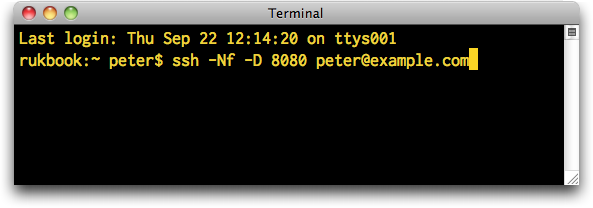

One of my favourite places to eat in Berlin this summer was Babanbè on Oranienplatz in Kreuzberg: it was a handy 2 minute walk from betahaus where I was working, has friendly staff, and serves terrific “Bánh mì” – Vietnamese sandwiches.
A couple of weeks ago when paying for my regular morning coffee at Casa Mia Café back here in Charlottetown I noticed that they’d added Bánh mì to the lunch menu and I was intrigued. But I resisted dropping in for lunch: I was afraid that Casa Mia’s take on the sandwich would be only a pale imitation of what I’d had in Berlin and I’d emerge disappointed.
But today I had a hankering for Bánh mì that I couldn’t shake, so I bit the bullet and went down to Casa Mia for lunch. I was not disappointed: their take on the Bánh mì has just the right amount of flavour and bite and crunch I was looking for. It’s official my new favourite lunch sandwich in town.
Dan Misener pointed to ifttt.com a couple of weeks ago and I curiously followed the link to see what it was. What it is: IF This Then That.
What is to say, a web service that lets you do things like “if I get a Twitter direct message, then call my mobile phone and read it to me.” Which looks like this:
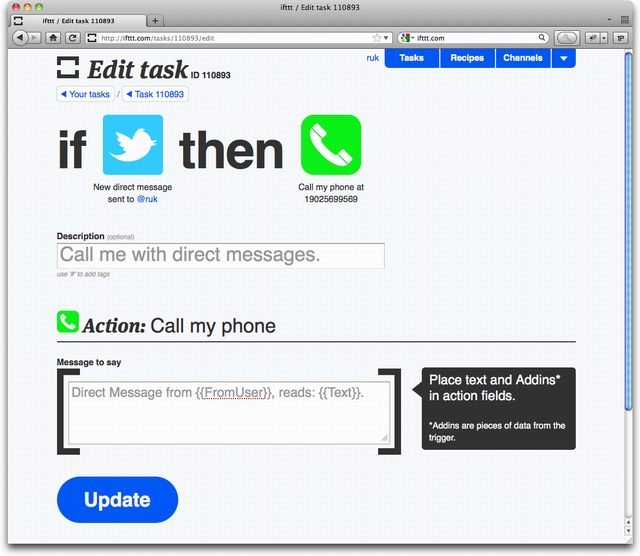
The service has a rich array of triggers (things like “if I get an email message,” “if there are new photos in my Flickr,” “if something new shows up on craigslist.” “if the current temperature drops below X”) complemented by an equally rich array of actions (“call my phone and read it to me,” “send an IM to Google Talk,” “add to my Instapaper,” “post to Facebook”), all wrapped up in a nice, simple, bold user interface.
IFTTT is the kind of Internet plumbing that the open web was built to enable; in turn it enables building all sorts of new and interesting applications for the open web. I encourage you to check it out and if you develop interesting and useful recipes, post them in the comments as fodder for others.
 I am
I am